Knitting Garments With Sock Yarn
You visit your local yarn store or festival and fall in love with the deep, mesmerizing hues of sock yarn from your favourite dyer. However, then you realize you were looking for yarn to knit a garment, not socks, and you may feel a bit disappointed.
But fear not—just because the yarn label says “sock” or suggests it’s for socks, doesn’t mean you can’t use it for your next sweater project.
Sock Yarns Fibres
One thing you’ll notice about many popular yarn brands is that their sock yarns tend to be very soft, and most are superwash wools. This is because knitters often prefer softer sock yarns as well as the convenience of throwing their socks with their regular laundry.
Among the sock yarns with the most projects on Ravelry, 7 out of 10 contain at least 50–100% merino wool, and 70% of them have 20–25% nylon.
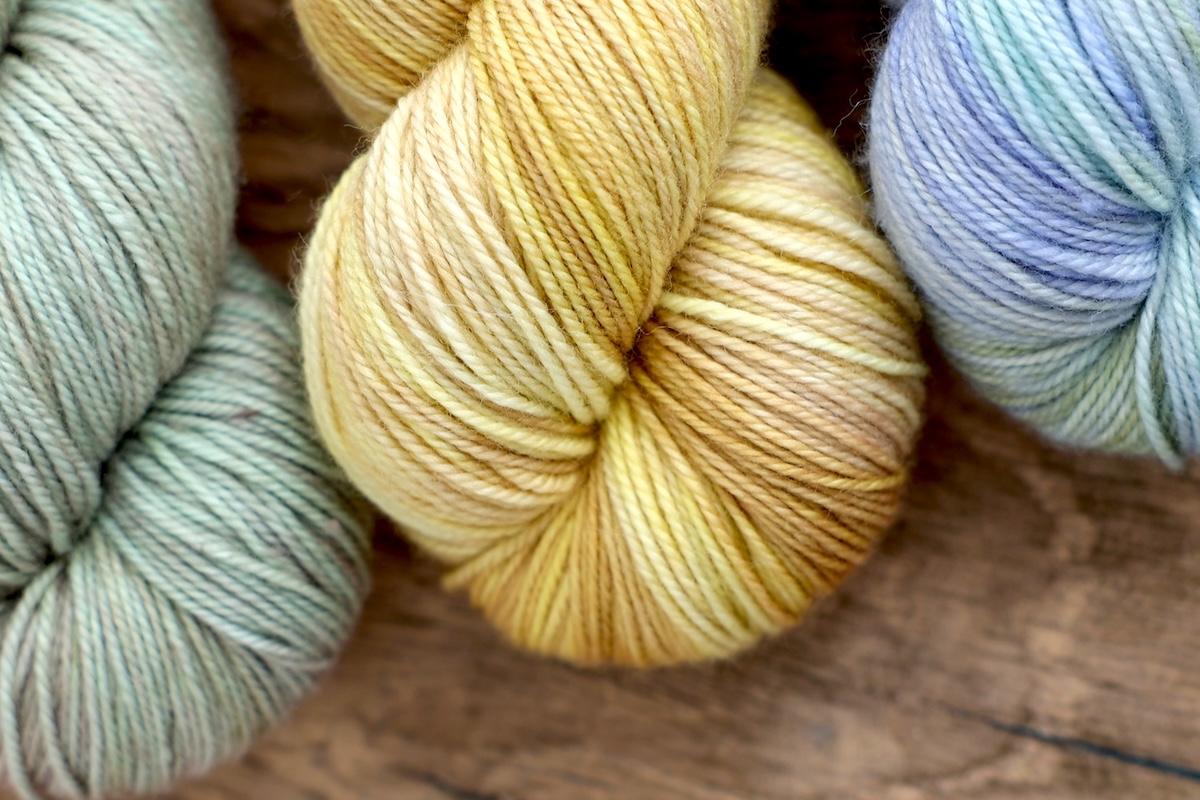
The fibre found in sock yarns will bring their characteristics to your garment fabric. Let’s go over a few common fibres.
Wool
Most sock yarns have at least 50% wool content. Wool is relatively lightweight, has good memory (so it returns to its original shape), and is elastic. The scales in wool help garments keep their shape. Wool fibres bring a matte sheen, relative softness, and take dye very well.
Superwash Wool
This is wool that has had its scales removed or glued down. Superwash wools tend to have a smoother surface and won’t felt when washed and agitated in hot water. They are easy to care for; however, they need to be knit at a tighter gauge than a similar non-superwash wool, so garments don’t sag under their own weight. Choosing garments with seams also helps create a more stable fabric. SweetGeorgia Tough Love Sock yarn is an example of a superwash wool sock yarn.
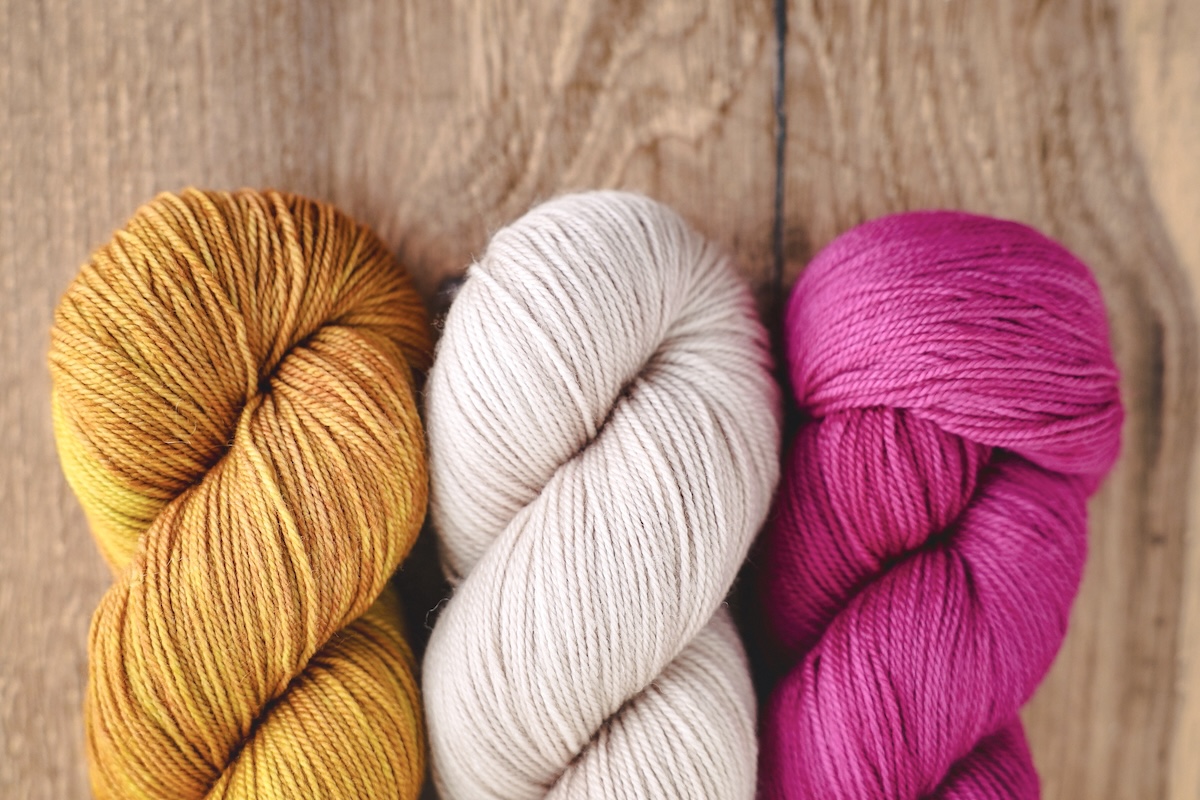
Mohair
A fabulous fibre, mohair takes dye beautifully and adds strength and softness to the fabric. It is a common addition to sock yarns that do not contain added nylon. SweetGeorgia Trifecta Fine is a strong, lustrous non-superwash wool, mohair (and silk) blend that shows these three fibres in action.
Cashmere
Some luxurious sock yarns, like SweetGeorgia CashLuxe Fine, incorporates a bit of this cloud-soft goat hair into their blends. Most cashmere blended sock yarns are hard to distinguish from other luxurious fingering-weight yarns. These sock yarn blends benefit from a tighter ply to minimize pilling.
Silk
Silk adds strength, softness, and incredible luminosity to sock yarns. Again, SweetGeorgia Trifecta Fine is a beautiful example of a strong non-superwash sock yarn without added nylon.
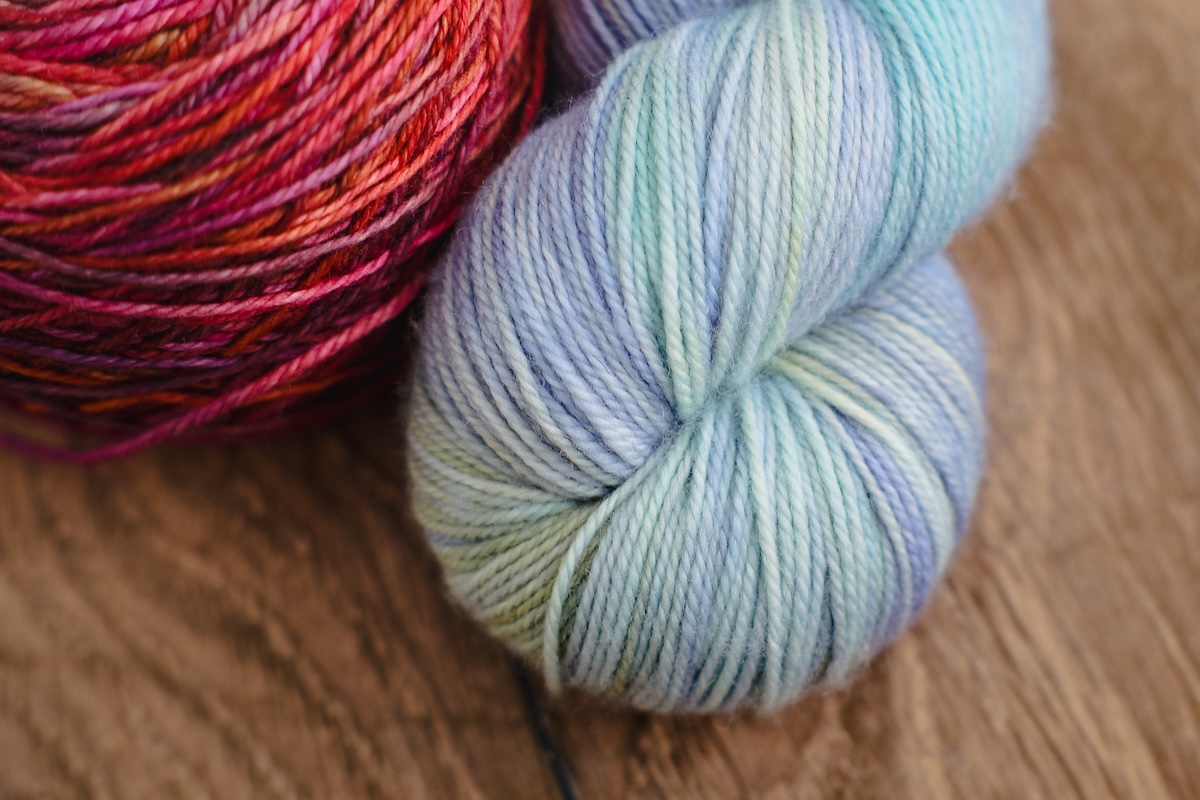
Semi-Synthetic Fibres
Such as rayon, bamboo, tencel, and viscose are designed as alternatives to silk. They are smooth, shiny, and slippery. Yarns blended with these fibres need to be knit at a tighter gauge, just like superwash-treated wools, to maintain the garment’s structure. Bamboo blends knit at a loose gauge may grow and grow until they become dresses instead of sweaters by the end of the day.
Nylon
This may be the most common fibre added to sock yarns. It’s strong and durable. I find that sock yarns with 20% nylon or less, like SweetGeorgia Tough Love Sock, are more comfortable when worn as garments. A higher nylon content can result in a sticky sensation against the skin.
Cotton
It is not only soft, but also wicks away moisture in warm weather. It’s often blended with wool, nylon, and even elastic to help with the heaviness and inelasticity of cotton fibres. Sock yarns with cotton may be spun in a chainette construction for the same reason.
Sock Yarn Advantages for Garment Knitting
First, the yarn construction (usually 3-ply or more) tends to make garments that withstand the wear and tear of even the most rambunctious kid.
Second, the tight ply also tends to pill less, even when spun from soft fibres.
Third, many popular sock yarns are spun from wools like merino, soft to the touch, hence attractive to wear by most sensitive skins.
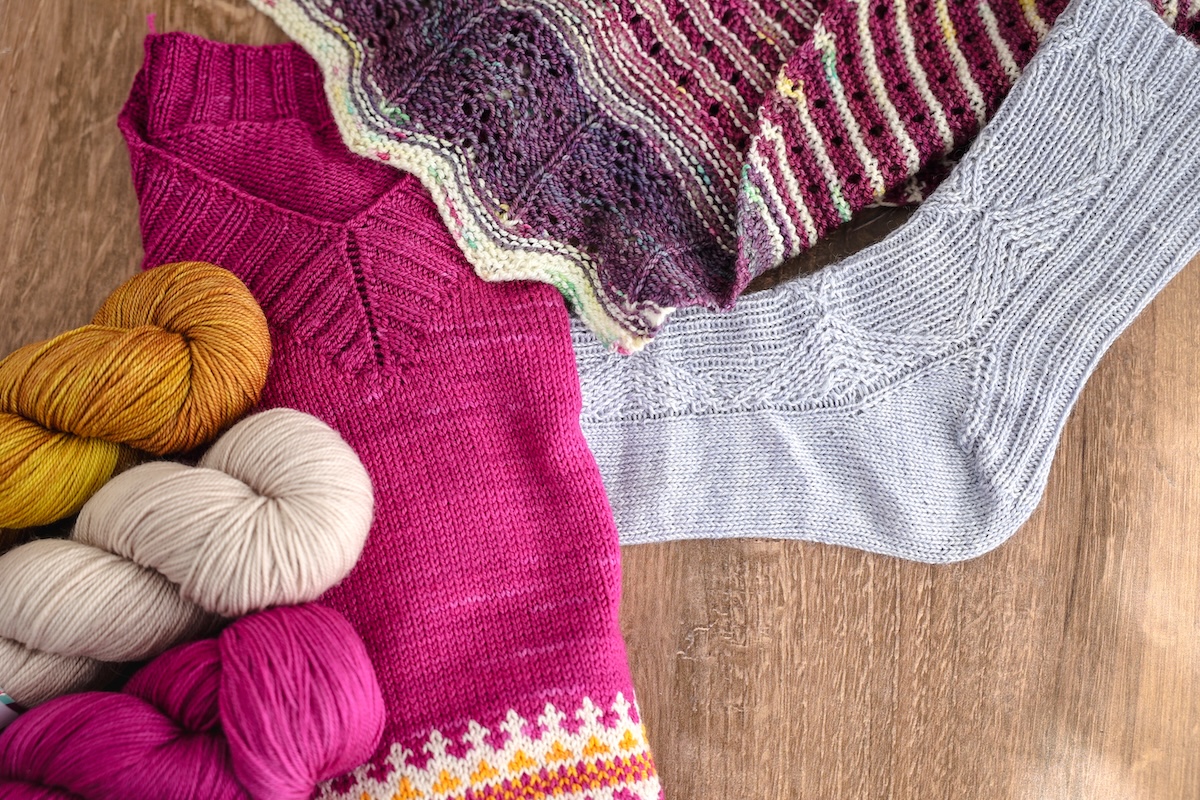
Fourthly, most sock yarns are superwash, which gives a vibrant, smooth appearance to the knitted fabric. Superwash wools are also perfect for knit-worthy people who may not be knit-wise. Even if the recipient throws the garment in the laundry washing and drying it together with the jeans and the towels, the sweater will keep its shape. However, just because fibres are treated as superwash doesn’t mean they’re indestructible. As with any clothing you want to keep in its best shape, hand washing and laying flat to dry will extend your handknit textile’s life so it looks its best for as long as you use it.
Lastly, sock yarn garments (and fingering-weight yarn garments) are very wearable at different temperatures. They become the layer you keep on in cold weather when running errands or working in air-conditioned offices; they are the perfect layer to accompany you throughout your day. If you live in temperate climates, it’s a garment you’ll reach for all year round.
Paring Sock Yarns with Projects
A bit of research can help you get started. It would be great if you could see how other knitters have used that sock yarn, and thanks to Ravelry, you can find just that.
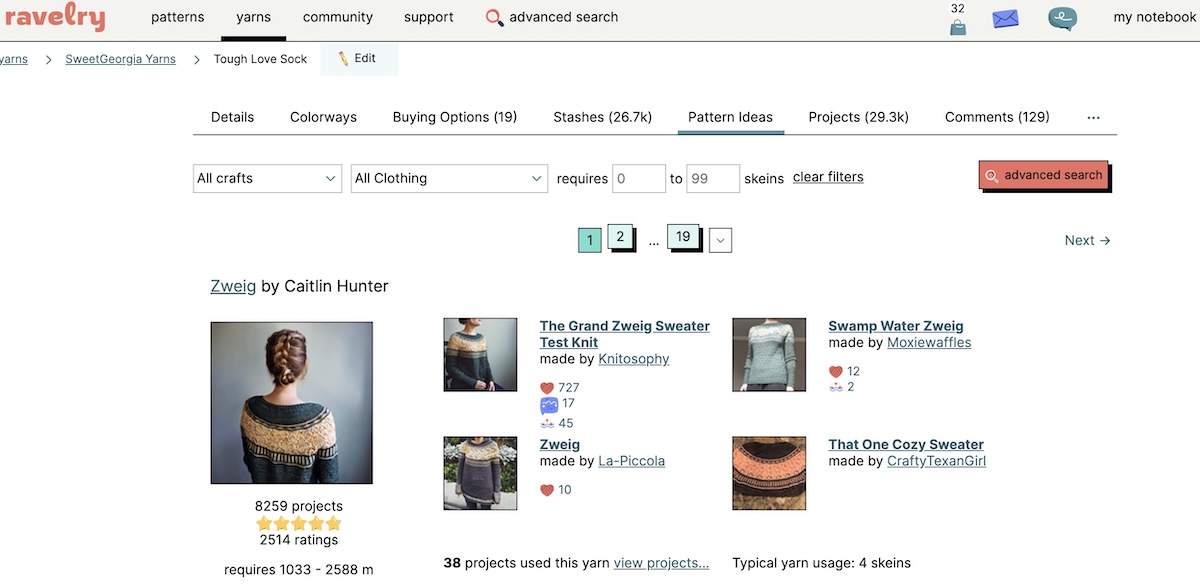
Look up the sock yarn you’re curious about on Ravelry (https://www.ravelry.com/yarns/), and once you find the yarn on their yarn catalogue, click the tab to see “Pattern Ideas.” You’ll be able to see what other garments have been knit with the same yarn by other knitters. You can also check if the yarn company has commissioned or designed garments for the yarn you want to try.
Sock & Garment Gauge Differences
Example #1
For the first example, the SweetGeorgia Tough Love Sock, yarn, a garment option would be the Every Berry, a lace-back tee by Tabetha Hedrick. This tee was knit at a gauge of 21 sts and 28 rows = 4″ / 10 cm in stockinette stitch, after blocking. The same yarn knit for socks would be used at a gauge of 32 stitches and 46 rows = 10 cm in stockinette stitch.
The difference in knitting gauge makes for a drapier but still structured textile that holds its shape. The gauge that the designer chose to use with this sock yarn gives you an idea of a range of gauges that would work for a garment.
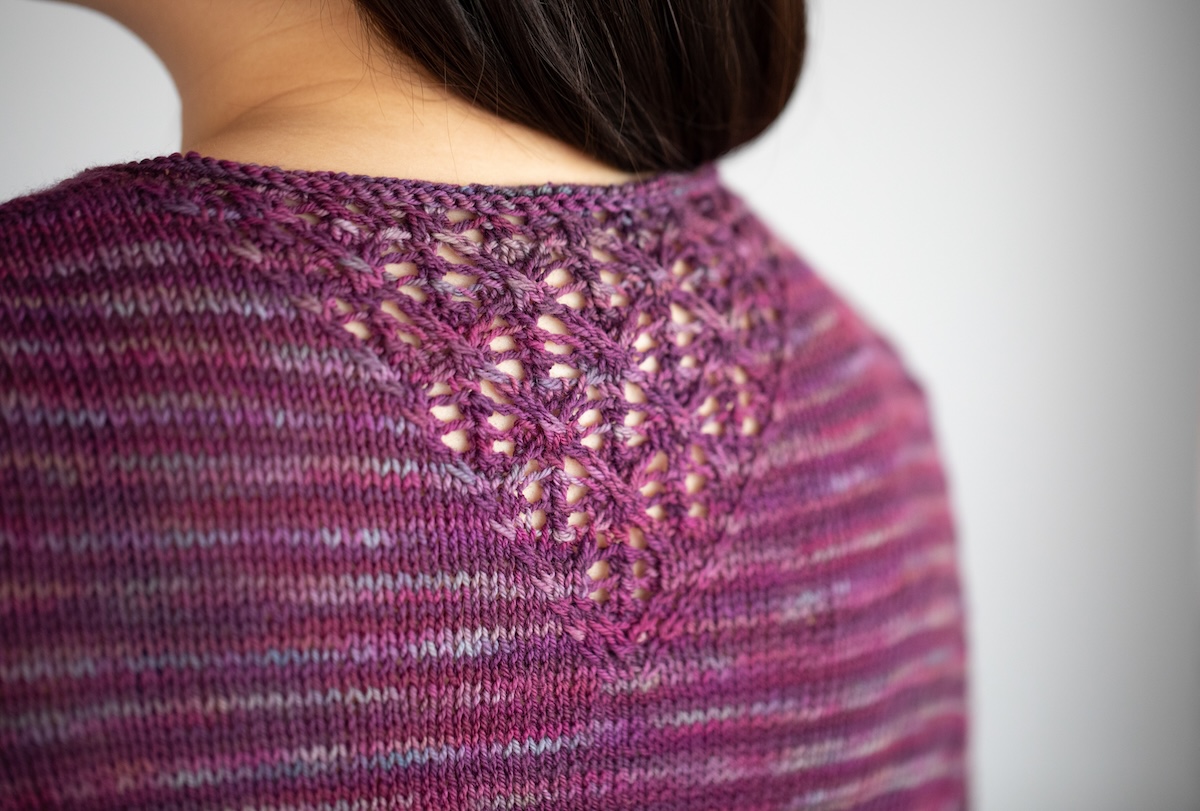
The Every Berry Tee was knit in pieces and sewn. This construction helps larger garments hold their shape better when knit with superwash yarns. If you want to learn more about the advantages and disadvantages of knitted garment construction, read our post: Top-Down Vs. Bottom-Up Breakdown.
Example #2
Now let’s look at another fabulous yarn, SweetGeorgia Mohair Silk Sock. This is a thinner sock yarn compared to SweetGeorgia Tough Love Sock. Looking at the Grotto Nymph pattern, a lacy tank by designer and teacher Holli Yeoh, this tank’s gauge, after blocking, is 26 sts and 37 rows = 4″ / 10 cm in stockinette stitch. This is a tighter gauge than what was called for in the above example.
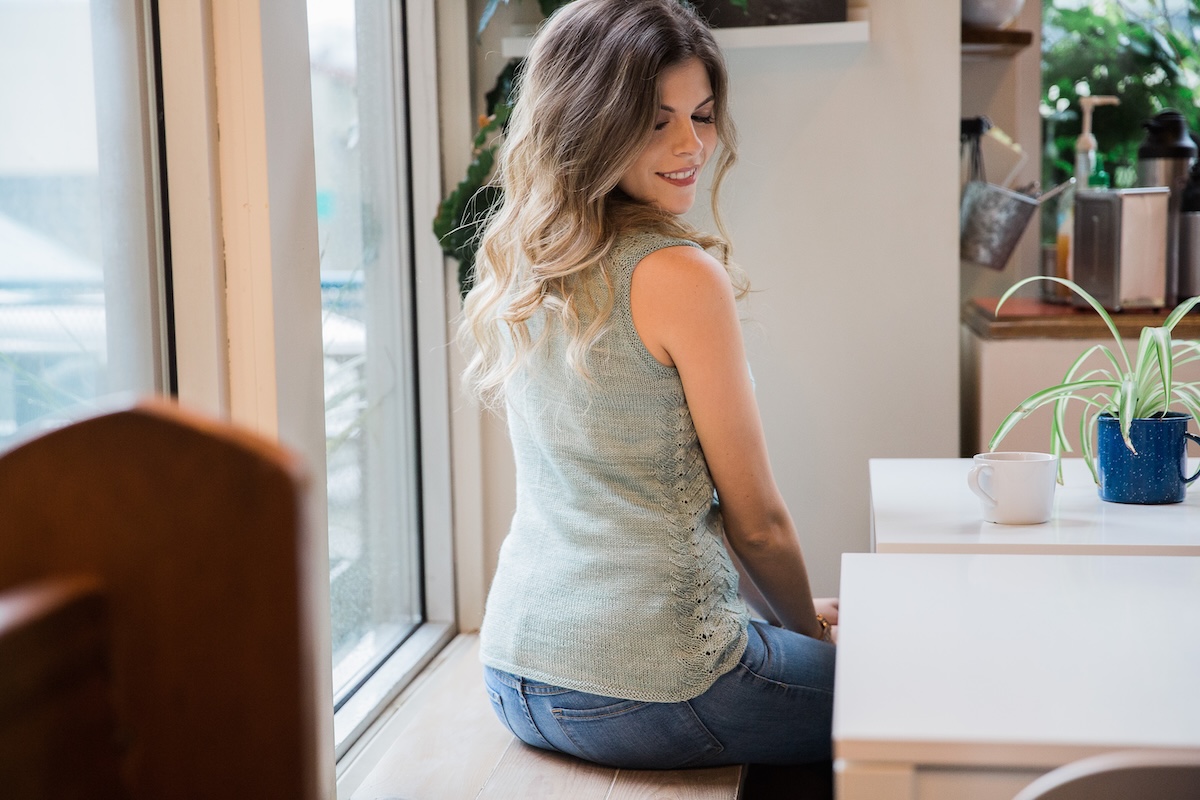
Swatching for Your Garment
Once you have a better idea of the sock yarn gauge you want to use and the style of sweater you want to knit, you probably know what I’m going to say next: the S word. I know it may not be your favourite activity, but swatching with the yarn you plan to use for a sweater is fundamental to getting the garment as you envisioned it.
When swatching, the most important thing is selecting a fabric that suits the garment’s purpose. You can also use this opportunity to find which needles work best for your yarn, get familiar with the knitting pattern—whether it’s colourwork, stockinette, or something else—and try any new techniques you may want to use in your sweater, like a tubular cast on.
If the thought of swatching takes the joy out of your planned day, read my post, Hats Make the Perfect Garment Swatch, Especially Colourwork!. It offers a great alternative to a regular swatch that can give you all the information you’ll need. However, if this is your first time working with a yarn, I do recommend a ”traditional” swatch, as described below.
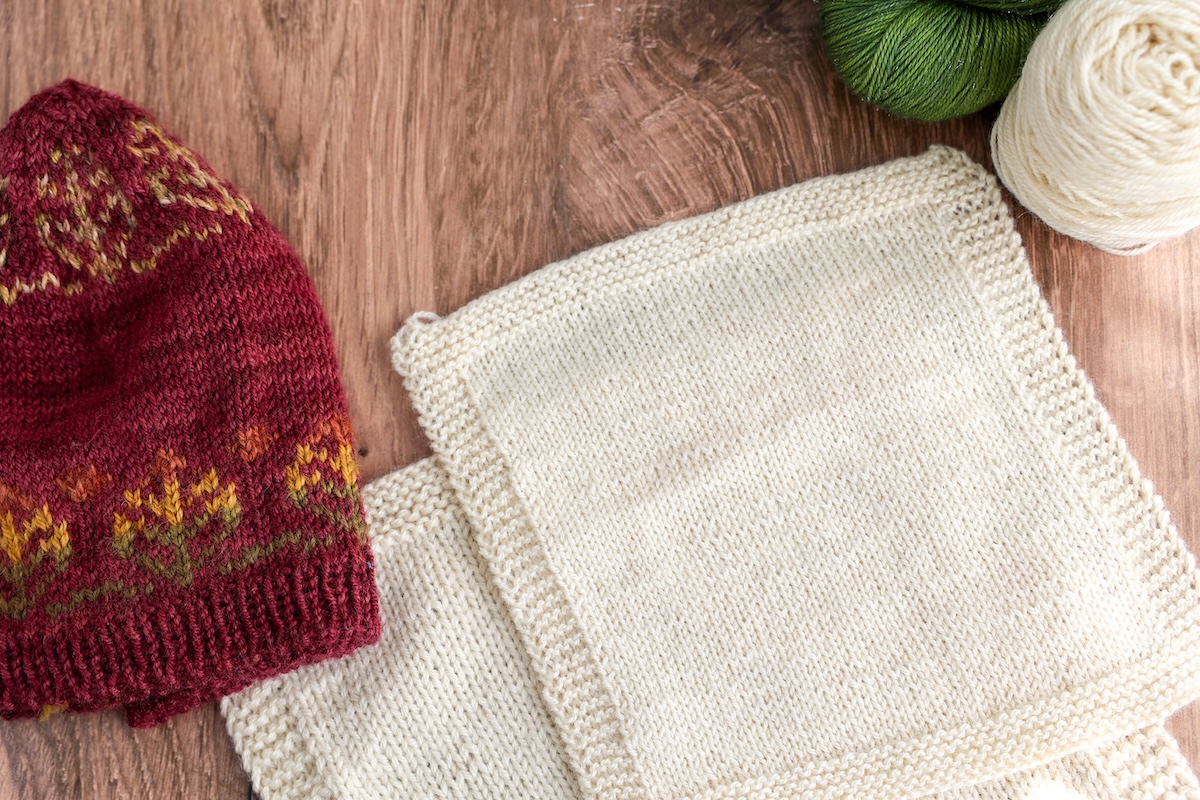
You could even take the whole skein of a new-to-you yarn on a “Swatch Date”! Knit with different needle sizes to create a range of gauges. This creates all sorts of fabrics, from durable socks to comfy garments and flowy shawls.
Swatch to Garment Steps
Step 1: Knit & Block Your Swatch
First, you’ll need a skein of yarn. Once you’ve wound it into a ball, it’s time to swatch.
Cast on 35 to 50 stitches and knit in the stitch pattern recommended in the pattern, until your swatch is about 5” / 13 cm long. Wash your swatch as you intend to wash your sweater—lay flat to air dry if that’s your plan, or throw it in the dryer if that’s what you’ll do (as I did for years with my young kids’ sweaters that needed to be washed every week).
Step 2: Evaluate Your Swatch
As stated in Amy Herzog’s Ultimate Sweater Book, a swatch should give you three things: a fabric you like, an accurate prediction of your gauge, and a gauge well-suited to the demands of your garment.
Sock yarns with superwash fibres need to be knit at tighter gauges than non-superwash fibres. I poke the tip of my pinky nail through the swatch fabric—if it can go through, I would swatch again with a needle one or two sizes smaller. If I’m planning a garment without seams, I aim for a tighter gauge with needles one or two sizes smaller.
I also evaluate the drape of the swatch. Two sock yarns may produce very different fabrics even at similar gauges. Compare the fabric from SweetGeorgia Trifecta Fine yarn (Bluefaced Leicester wool, mohair, and silk), the three fibres in the blend contribute to a drapier fabric than a swatch in SweetGeorgia Yarns Tough Love Sock (superwash merino and nylon).
Step 3: Measure Gauge
Once you have a fabric you love for the sweater you envision, measure your gauge on at least a 4”/ 10 cm space at the centre of your gauge swatch. If the gauge is the same gauge as the pattern you plan to knit, you are golden; if not, you may need to choose a bigger or smaller size in the pattern for the finished size that will fit your garment’s recipient.
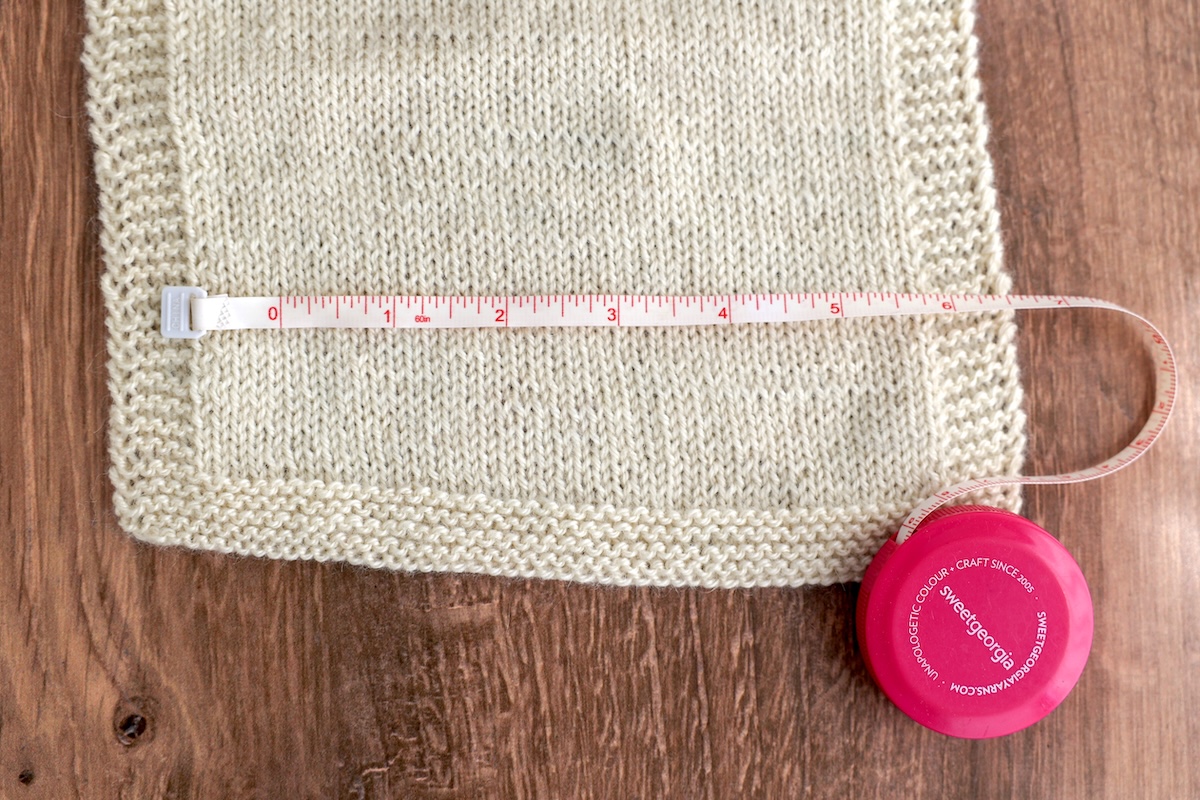
If you’d like to learn more about how to swatch and how to choose a size that works for your shape, explore Mastering Gauge and Perfect Fit courses at the School of SweetGeorgia with Tabetha Hedrick. And if you’d like to elevate your finishing techniques on your hand-knits, check out Holli Yeoh’s Fundamentals to Finishing Knits course.
The post Knitting Garments With Sock Yarn appeared first on SweetGeorgia Yarns.
Comments
Post a Comment